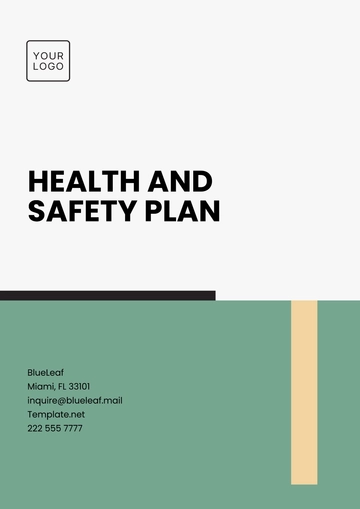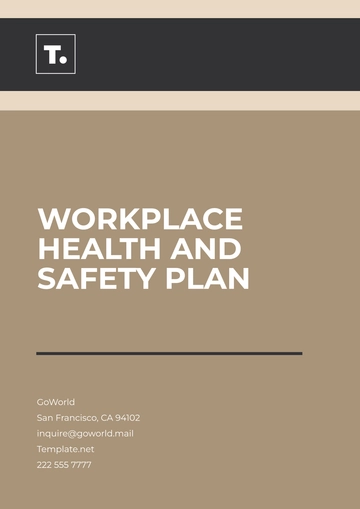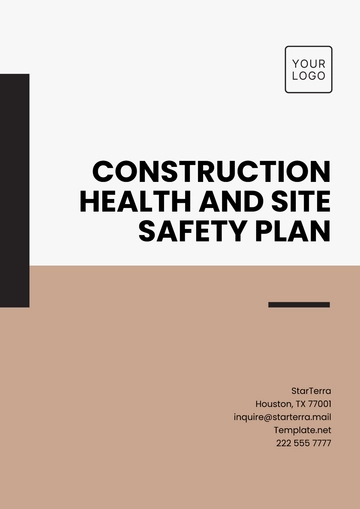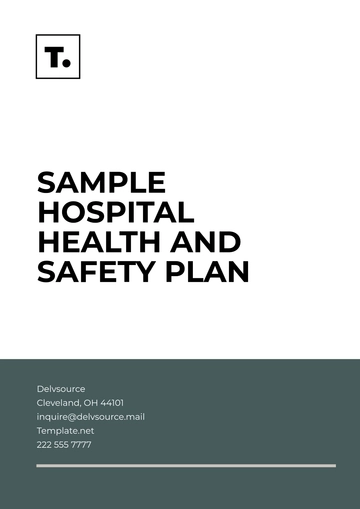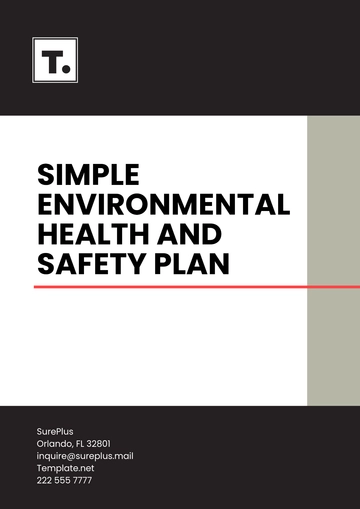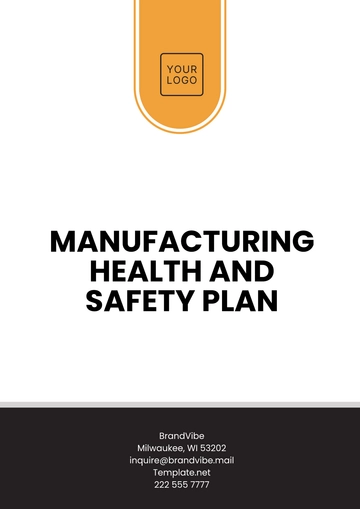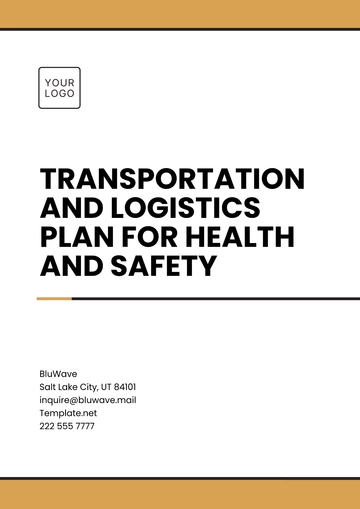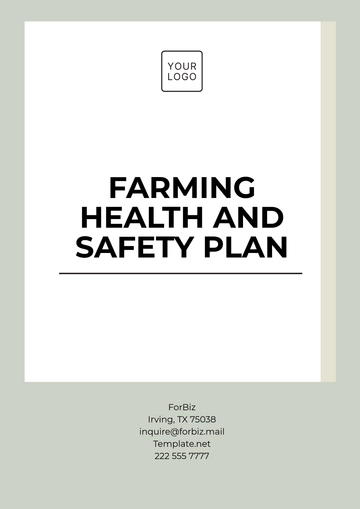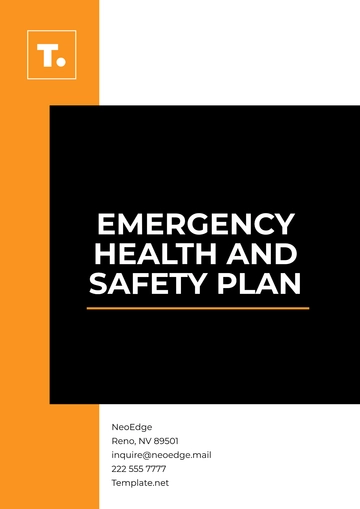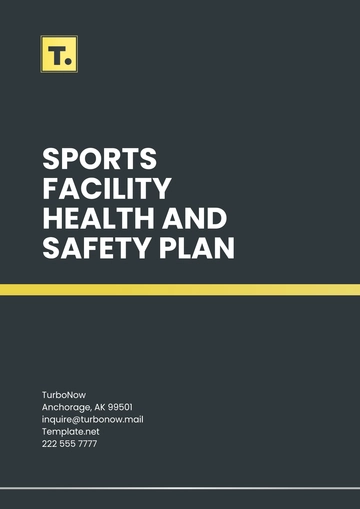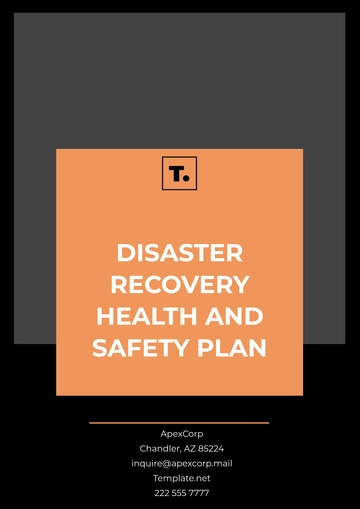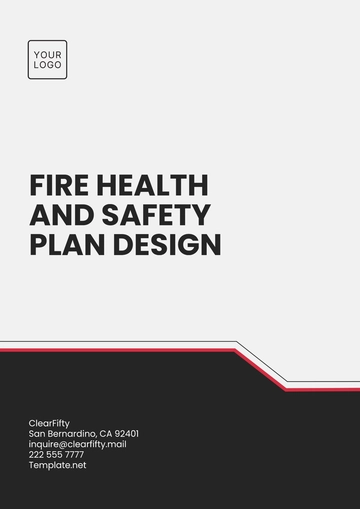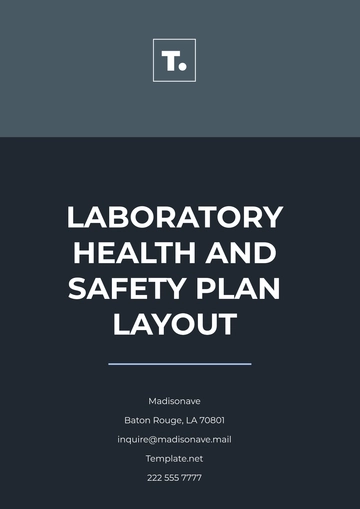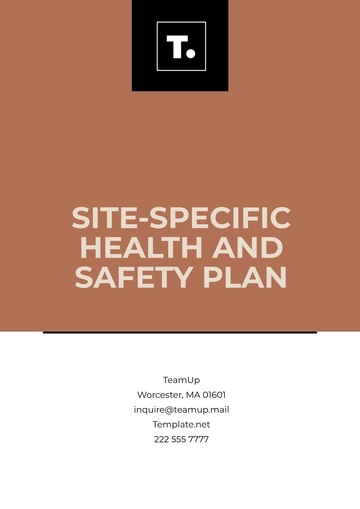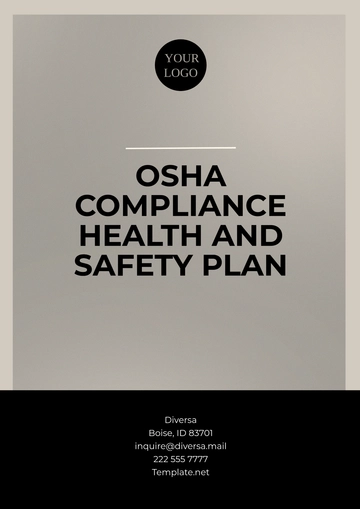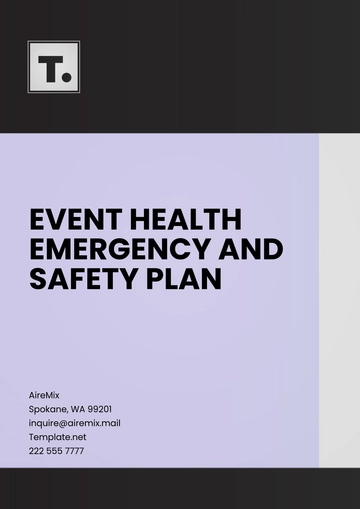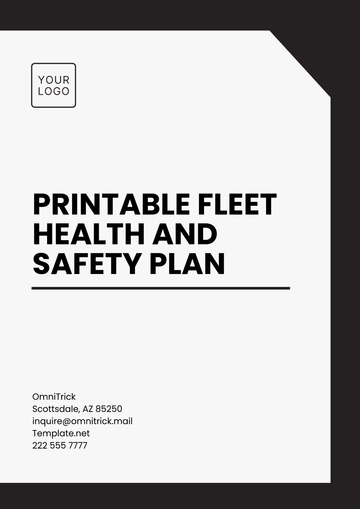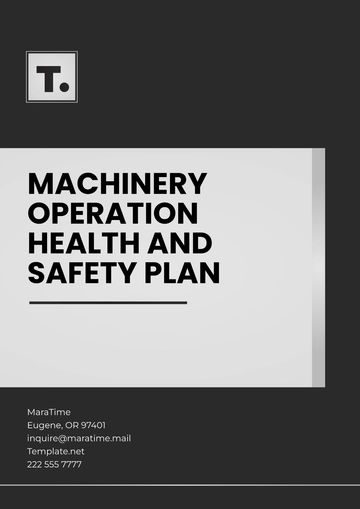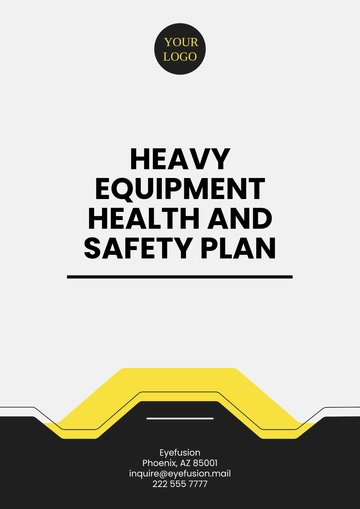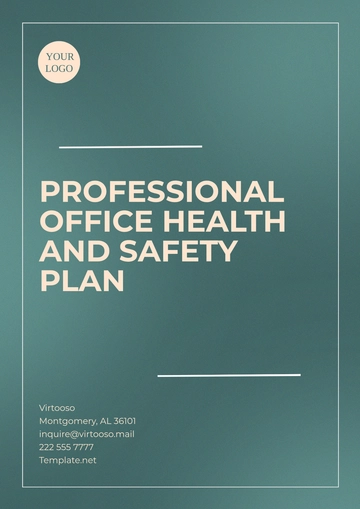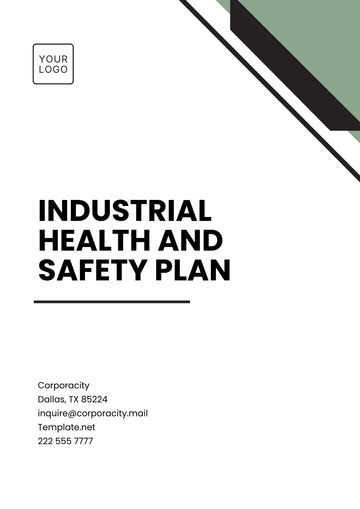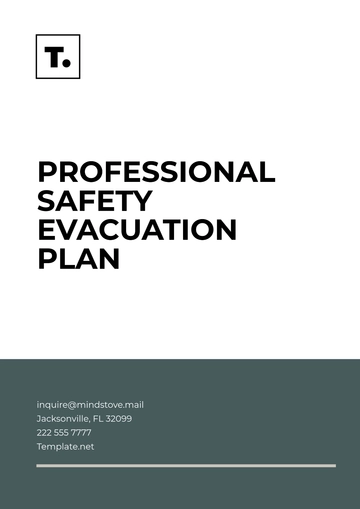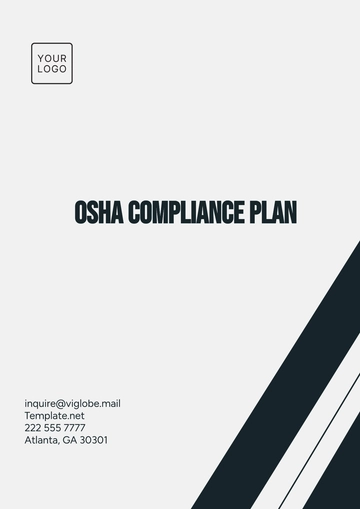Free Dental Clinic Site Safety Plan
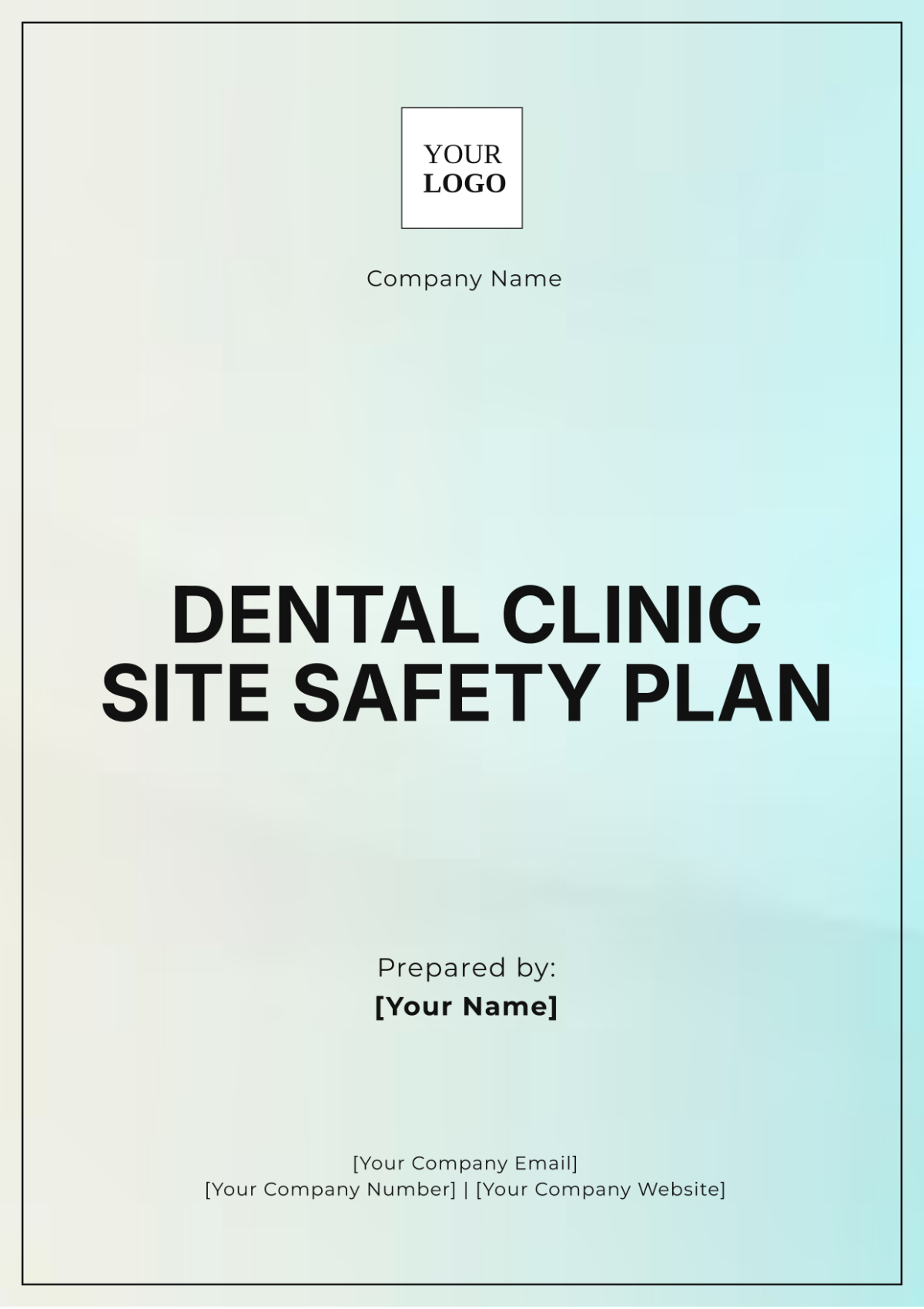
Prepared by | [Your Name] |
Company Name | [Your Company Name] |
Date | September 2, 2054 |
[Your Email] |
1. Introduction
The Dental Clinic Site Safety Plan is designed to establish safety protocols and procedures to protect patients, staff, and visitors within the dental clinic environment. This plan outlines the key elements of safety management, emergency procedures, and infection control measures essential for maintaining a safe clinical setting.
2. Objectives
To ensure the health and safety of all individuals within the clinic.
To establish a framework for identifying, assessing, and managing safety risks.
To comply with relevant health and safety regulations and standards.
To promote a culture of safety through training and awareness.
3. Scope
This plan applies to all personnel working in the dental clinic, including dentists, hygienists, dental assistants, administrative staff, and any visitors or contractors present in the clinic.
4. Responsibilities
Role | Key Responsibilities |
|---|---|
Safety Officer | Develops and implements the safety plan; conducts audits; coordinates training. |
Dental Staff | Adheres to safety protocols; participates in training and drills; reports hazards. |
Management | Supports safety initiatives; allocates resources for training; reviews and updates the safety plan. |
5. Emergency Procedures
5.1 Emergency Contact Information
Local Emergency Services: 911
Poison Control: 1-800-222-1222
Nearest Hospital: City General Hospital, (555) 123-4567
5.2 Evacuation Procedures
Staff should direct patients to the nearest illuminated exit in case of an emergency requiring evacuation.
Regular fire drills should be conducted to familiarize staff with evacuation routes.
A designated safe meeting area outside the clinic should be established in a nearby public location.
5.3 Medical Emergencies
Staff should be trained in Basic Life Support (BLS) and use of an Automated External Defibrillator (AED).
Keep emergency medical kits accessible in each treatment room and regularly check for supplies.
6. Infection Control Procedures
6.1 Standard Precautions
All staff must adhere to standard precautions, including hand hygiene, use of personal protective equipment (PPE), and safe handling of instruments.
Maintain strict protocols for sterilization and disinfection of dental instruments and surfaces, following guidelines from the Centers for Disease Control and Prevention (CDC).
6.2 Waste Management
Segregate waste into appropriate categories: general waste, hazardous waste, and sharps.
Ensure sharps containers are available and disposed of according to regulations. Regularly schedule waste pickups with licensed medical waste disposal services.
7. Safety Training
7.1 Orientation
New staff must undergo safety training as part of their orientation process, covering emergency procedures, infection control, and workplace safety.
7.2 Ongoing Training
Conduct regular training sessions every six months to refresh staff knowledge on safety protocols and introduce new regulations or changes in procedures.
8. Risk Assessment
8.1 Hazard Identification
Conduct regular assessments quarterly to identify potential hazards in the clinic, such as slippery floors, chemical exposure, or ergonomic risks.
8.2 Mitigation Strategies
Implement strategies to minimize identified risks, including proper signage, training, and maintenance of equipment. Consider ergonomic assessments for staff workstations.
9. Review and Update of the Safety Plan
This Dental Clinic Site Safety Plan will be reviewed annually or as needed based on changes in regulations, clinic operations, or after any incidents. Staff feedback will be incorporated into the revisions to improve the effectiveness of safety protocols.
10. Conclusion
The Dental Clinic Site Safety Plan is essential for fostering a safe environment for all who enter the clinic. By adhering to these protocols and regularly reviewing safety measures, the clinic can ensure compliance with health and safety regulations while providing high-quality care to patients.
- 100% Customizable, free editor
- Access 1 Million+ Templates, photo’s & graphics
- Download or share as a template
- Click and replace photos, graphics, text, backgrounds
- Resize, crop, AI write & more
- Access advanced editor
Enhance patient and staff safety in your dental clinic with the Dental Clinic Site Safety Plan Template from Template.net. This editable and customizable template is designed to address the specific safety needs of dental practices. Easily modify the content to align with your clinic's protocols and regulatory standards. With its clear structure and comprehensive guidelines, you can effectively communicate essential safety measures, fostering a secure environment for everyone in your clinic.
You may also like
- Finance Plan
- Construction Plan
- Sales Plan
- Development Plan
- Career Plan
- Budget Plan
- HR Plan
- Education Plan
- Transition Plan
- Work Plan
- Training Plan
- Communication Plan
- Operation Plan
- Health And Safety Plan
- Strategy Plan
- Professional Development Plan
- Advertising Plan
- Risk Management Plan
- Restaurant Plan
- School Plan
- Nursing Home Patient Care Plan
- Nursing Care Plan
- Plan Event
- Startup Plan
- Social Media Plan
- Staffing Plan
- Annual Plan
- Content Plan
- Payment Plan
- Implementation Plan
- Hotel Plan
- Workout Plan
- Accounting Plan
- Campaign Plan
- Essay Plan
- 30 60 90 Day Plan
- Research Plan
- Recruitment Plan
- 90 Day Plan
- Quarterly Plan
- Emergency Plan
- 5 Year Plan
- Gym Plan
- Personal Plan
- IT and Software Plan
- Treatment Plan
- Real Estate Plan
- Law Firm Plan
- Healthcare Plan
- Improvement Plan
- Media Plan
- 5 Year Business Plan
- Learning Plan
- Marketing Campaign Plan
- Travel Agency Plan
- Cleaning Services Plan
- Interior Design Plan
- Performance Plan
- PR Plan
- Birth Plan
- Life Plan
- SEO Plan
- Disaster Recovery Plan
- Continuity Plan
- Launch Plan
- Legal Plan
- Behavior Plan
- Performance Improvement Plan
- Salon Plan
- Security Plan
- Security Management Plan
- Employee Development Plan
- Quality Plan
- Service Improvement Plan
- Growth Plan
- Incident Response Plan
- Basketball Plan
- Emergency Action Plan
- Product Launch Plan
- Spa Plan
- Employee Training Plan
- Data Analysis Plan
- Employee Action Plan
- Territory Plan
- Audit Plan
- Classroom Plan
- Activity Plan
- Parenting Plan
- Care Plan
- Project Execution Plan
- Exercise Plan
- Internship Plan
- Software Development Plan
- Continuous Improvement Plan
- Leave Plan
- 90 Day Sales Plan
- Advertising Agency Plan
- Employee Transition Plan
- Smart Action Plan
- Workplace Safety Plan
- Behavior Change Plan
- Contingency Plan
- Continuity of Operations Plan
- Health Plan
- Quality Control Plan
- Self Plan
- Sports Development Plan
- Change Management Plan
- Ecommerce Plan
- Personal Financial Plan
- Process Improvement Plan
- 30-60-90 Day Sales Plan
- Crisis Management Plan
- Engagement Plan
- Execution Plan
- Pandemic Plan
- Quality Assurance Plan
- Service Continuity Plan
- Agile Project Plan
- Fundraising Plan
- Job Transition Plan
- Asset Maintenance Plan
- Maintenance Plan
- Software Test Plan
- Staff Training and Development Plan
- 3 Year Plan
- Brand Activation Plan
- Release Plan
- Resource Plan
- Risk Mitigation Plan
- Teacher Plan
- 30 60 90 Day Plan for New Manager
- Food Safety Plan
- Food Truck Plan
- Hiring Plan
- Quality Management Plan
- Wellness Plan
- Behavior Intervention Plan
- Bonus Plan
- Investment Plan
- Maternity Leave Plan
- Pandemic Response Plan
- Succession Planning
- Coaching Plan
- Configuration Management Plan
- Remote Work Plan
- Self Care Plan
- Teaching Plan
- 100-Day Plan
- HACCP Plan
- Student Plan
- Sustainability Plan
- 30 60 90 Day Plan for Interview
- Access Plan
- Site Specific Safety Plan
